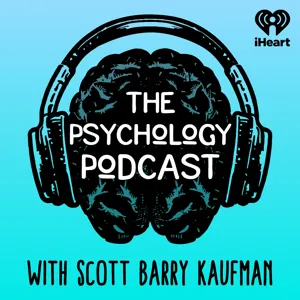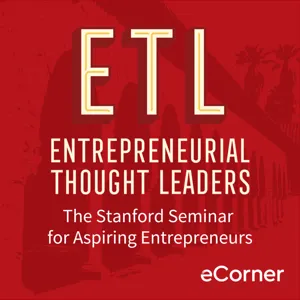Podcast Summary
Exploring the Connection Between Creativity and Intelligence: E. Paul Torrance challenged the assumption that high IQ equals a creative life, and creativity can manifest in various forms from artistic expressions to problem-solving, with scientific investigations exploring its relationship with mental illness, neuroscience, and personality traits.
Creativity and intelligence are often interconnected but distinct concepts. While intelligence refers to the ability to acquire and apply knowledge, creativity involves generating new and original ideas. The study of creativity has evolved significantly over the years, with researchers identifying various predictors and personality traits associated with it. One influential figure in creativity research is E. Paul Torrance, who challenged the assumption that a high IQ equates to a creative life. Creativity can manifest in various forms, from artistic expressions to problem-solving, and even in seemingly paradoxical ideas. Scientific investigations into creativity have explored its relationship with mental illness, neuroscience, and personality traits, among other areas. As we delve deeper into the Human Potential Lab, we will continue to explore the intricacies of creativity and its role in shaping our lives.
Understanding Creativity through Torrance's Research: Torrance's research on creativity revealed that it's distinct from high IQ, and creativity tests like his predict important life outcomes better than IQ tests
Creativity, as studied by E. Paul Torrance in the 1950s, is a distinct area of investigation in psychology that cannot be equated with high IQ. Torrance conducted research to identify the major predictors of creativity throughout the human lifespan and developed the Torrance Tests of Creative Thinking to assess it. These tests measured fluency, originality, flexibility, and elaboration of responses to divergent thinking questions. Torrance discovered that these creativity tests were better predictors of important life outcomes, such as academic and post-graduate achievements, creative hobbies, and even the number of socks or hair colors, than IQ tests. These findings highlight the significance of creativity as a unique and valuable trait that warrants further scientific exploration.
IQ tests don't accurately measure creativity: Divergent thinking, cultural fairness, beyonder characteristics, and a clear image of a future self are better predictors of creativity than IQ tests.
IQ tests may not accurately predict creative potential, as research shows that divergent thinking, a key component of creativity, is a better predictor. Additionally, divergent thinking tests have been found to be culturally fair, unlike IQ tests which often show differences between racial and ethnic groups. Other personal characteristics, called "beyonder characteristics," such as a love of work, persistence, feeling a deep purpose in life, having a great tolerance for mistakes, being open to change, taking risks, and feeling comfortable as a minority, have also been found to predict lifelong creativity even better than divergent thinking tests. Lastly, having a clear image of a future self was identified as one of the most important factors for creativity and creative thinking. Torrance, the researcher behind these findings, believed that falling in love with a future image of oneself is a powerful source of creative energy and accomplishment.
Embrace Curiosity, Find a Mentor, Master a Skill: Curiosity, a mentor, and skill mastery increase chances of creative success. Openness to experience is a better predictor in arts, IQ in sciences. Conscientiousness plays a role but correlation is minimal.
Individuals who are open to new experiences and have a strong curiosity for the world around them are more likely to achieve creative success throughout their lives. This was the key finding from a foundational creativity study, which also highlighted the importance of finding a mentor or teacher to help guide personal growth and mastering a specific skill or craft. Contrary to popular belief, there is no significant correlation between creativity and neuroticism or conscientiousness. Instead, creativity is best predicted by openness to experience, which includes traits such as inventiveness, love for art, and deep immersion in music or poetry. However, it's important to note that the correlation between openness to experience and creative achievement varies across different creative domains, with openness being a better predictor in the arts and IQ being a better predictor in the sciences. Additionally, the subcomponents of conscientiousness, such as industriousness and perseverance, play a role in creative success, but the overall correlation between conscientiousness and creativity is minimal. So, to summarize, embrace your curiosity, seek out a mentor, and focus on mastering a specific skill or craft to increase your chances of creative success.
Openness to experience is the strongest predictor of creativity, but intellectual curiosity is a stronger predictor for scientific creativity.: Openness to experience is crucial for creativity, but intellectual curiosity is particularly important for scientific creativity, while consistency and orderliness may not be as relevant as previously thought.
Openness to experience is the strongest predictor of creative achievement across various forms and domains of creativity. However, within the openness to experience domain, intellectual curiosity is a stronger predictor for scientific creativity, while openness to aesthetics, emotions, and imagination is more strongly correlated with creative achievement in the arts. Conscientiousness, specifically consistency and orderliness, was not found to be as relevant to lifelong creativity as previously thought due to the nature of creative processes involving variability and trial and error. Additionally, there was a small positive correlation with extroversion, but the relationship varied depending on the specific form of creativity. The findings are consistent with earlier research, such as the IPAR study, which found that creative people are less likely to conform and more likely to challenge the status quo.
The Complexity of Creative Minds: Creative individuals possess a unique blend of traits, including mental health and signs of mental illness, a strong ego, the ability to produce innovative works, a 'messy mind' for idea generation, mindful daydreaming, imaginative grit, passion, sensitivity, playfulness, seriousness, logic, vulnerability, resilience, and rebellion.
Creative people, as described in the studies of Frank Barron and Mihaly Csikszentmihalyi, exhibit a unique blend of seemingly contradictory traits. They possess both mental health and signs of mental illness, demonstrating a strong ego and the ability to produce creative works despite these complexities. Creative individuals are often described as having "messy minds," which allows them to mix and match seemingly disparate ideas and perspectives. They are mindful daydreamers, imaginatively gritty, passionately introverted, openly sensitive, playfully serious, logically intuitive, vulnerably resilient, and rebellious experts. These traits enable them to navigate the demands of their creative domains and generate innovative solutions. Overall, the research emphasizes the importance of embracing the complexity and diversity of creative minds.
Two Brain Networks for Creativity: Imagination and Executive Control: The Imagination Network, located in the medial surface of the brain, is responsible for daydreaming, planning, self-awareness, and perspective-taking, while the Executive Control Network, located on the lateral surface, handles attention, working memory, and cognitive flexibility. Their interaction leads to creative insights and innovations.
Creativity involves the integration of seemingly contradictory traits and the generation of new meanings for complex experiences. Neuroscientific research has identified two essential brain networks for creativity: the Imagination Network and the Executive Control Network. The Imagination Network, also known as the default mode network, is located in the medial surface of the brain and is responsible for daydreaming, planning, self-awareness, and perspective-taking. It is active during rest and is crucial for constructing meaning from our experiences and mentally simulating others' perspectives. The Executive Control Network, located on the lateral surface of the brain, is responsible for attention, working memory, and cognitive flexibility. Together, these networks enable us to combine diverse thoughts and traits, leading to creative insights and innovations.
Brain Networks Involved in Creativity: Creativity involves interaction of multiple brain networks like the prefrontal cortex, parietal lobe, default mode network, executive attention network, and salience network.
Creativity is a complex cognitive process that involves the integration of various brain networks. The prefrontal cortex, specifically its relationship with the parietal lobe, plays a crucial role in conscious focusing and top-down control of attention during creative thinking. The parietal lobe helps us hold multiple pieces of information, inhibit irrelevant ideas, and be flexible in our attention. Another essential brain network for creativity is the salience network, which includes areas like the dorsal anterior cingulate cortex and anterior insula. The salience network subconsciously tags information as relevant or irrelevant to our goals and passes it on to either the executive attention network or the imagination network. Individuals with high latent inhibition, a trait associated with the salience network, tend to automatically inhibit irrelevant information, which can lead to increased creativity. However, this link between creativity and mental illness is nuanced, and further research is needed to understand the complex relationship between the two. In conclusion, creativity is a whole-brain process that involves the interaction of multiple brain networks, including the default mode network, executive attention network, and salience network. Understanding these networks and their roles in creativity can provide valuable insights into the creative mind and the creative human.
The creative process involves communication between various brain networks: Early creative stages benefit from reduced executive attention, allowing free flow of ideas, while later stages require executive attention for practicality.
The creative process engages various brain networks, and the efficiency of their communication is linked to divergent thinking ability. The initial stage of creative thinking benefits from reduced executive attention network functioning, allowing ideas to flow freely between brain networks. However, as the creative process progresses, activating the executive attention network can help ensure generated ideas are practical and useful. The interaction and efficiency of multiple brain networks during the time scale of creative thinking is a new and exciting area of neuroscience research. It's important to note that deactivating executive attentional control over the creative process, particularly during the earliest stages, can help artists, poets, jazz improvisers, and others enter a flow state, which is essential for creativity. This research highlights the importance of both novelty and usefulness in the creative mind. It's crucial to respect and acknowledge the value of individuals who challenge societal norms and push boundaries, as they may be essential for innovation.
Finding the balance between originality and practicality in creativity: Creativity requires a balance between original ideas and practical applications to make a difference in society
Creativity is not just about coming up with original ideas, but also about making those ideas relevant and practical. The speaker emphasizes the importance of both originality and practicality in the creative process. Without practicality, original ideas may be overlooked or dismissed as impractical or even crazy. On the other hand, too much practicality without originality may lead to a lack of innovation. The speaker uses the analogy of a fine line between crazy and creative, and encourages society to be more open to new ideas. The latest and old research on creativity paint a picture of the creative person as someone who can discover new truths and combine them with relevance and practicality to make a difference in society. The speaker hopes that this understanding of creativity will help encourage and support creative people in our society. In summary, creativity involves both originality and practicality, and it's essential to find the balance between the two to make a meaningful impact.
CVS Health and Rhodes Scholar: Enhancing Quality of Life in Different Ways: CVS Health improves well-being through healthcare services, while Rhodes Scholar offers educational travel adventures for adults to explore and learn.
CVS Health is dedicated to providing comprehensive healthcare services, both in-person and virtually, through its various subsidiaries including CVS Pharmacy, Oak Street Health, CVS Specialty, Signify Health, and Aetna. These services range from quality care and support, in-home evaluations, and mental health needs. On the other hand, Rhodes Scholar offers educational travel adventures for adults 50 and above, providing opportunities for active learning and cultural exploration in over 100 countries and throughout the United States. Both CVS Health and Rhodes Scholar aim to enhance the quality of life and well-being of individuals in different ways. For more information on CVS Health's services and Rhodes Scholar's travel adventures, visit cvshealth.com/healthierhappenstogether and roadscholar.org, respectively.






